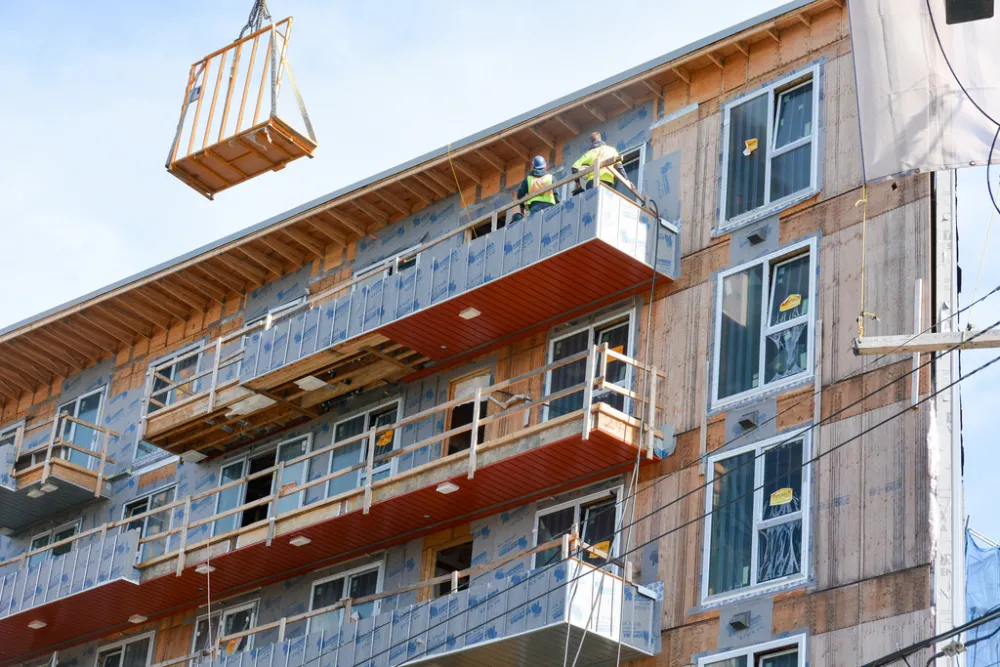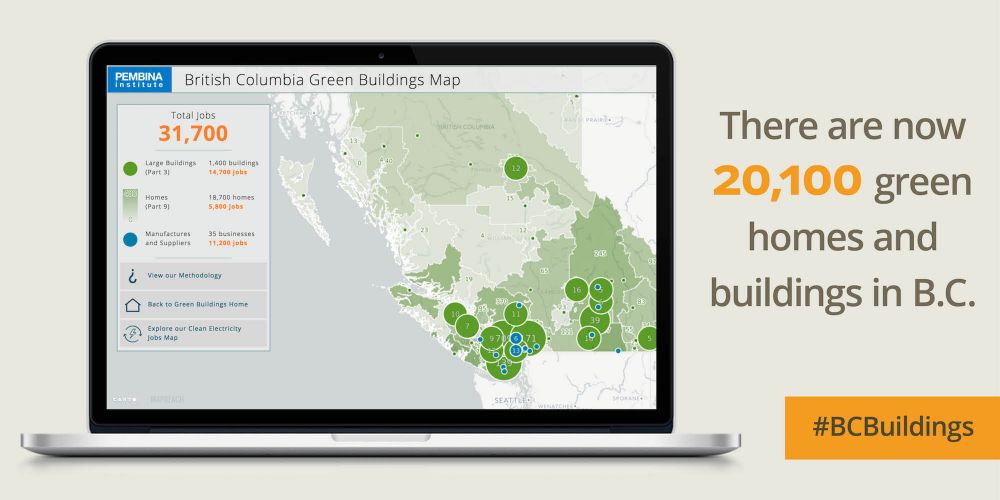Canadians spend 90% of their time, on average, indoors. Therefore, the quality of our homes and buildings is of major importance to our health and wellbeing, our comfort and lifestyle, and our productivity and pocketbooks. Buildings also matter to our carbon footprint — both as individuals and as a country. From apartments to schools to office towers, buildings are responsible for nearly 12% of Canada’s overall carbon pollution and more than a quarter of our energy-related greenhouse gas emissions.
The good news: designing our new buildings and retrofitting our existing buildings to make them ultra energy-efficient and low-carbon generates many benefits. Green buildings boast higher air quality and fewer drafts, stay warmer in winter and cooler in summer, and are safer in disasters. Investing in energy efficiency also leads to more affordable utility bills, higher resale values, job creation, and economic growth.
In the Pan-Canadian Framework on Clean Growth and Climate Change, the country’s first ministers laid the groundwork for bold action in the building sector. With the passing of the first anniversary of the Pan-Canadian Framework, we can’t afford to wait to see this ambition translated into action. That’s why Équiterre and the Pembina Institute have released Federal Policies for Low-Carbon Buildings, a blueprint for the rapid implementation of the building commitments in the Pan-Canadian Framework.
For starters, Canada needs a set of ambitious national targets for the building sector. This would set the tone for public and private investments in energy efficiency, distributed energy, and other building technologies; help build transparency and accountability for national efforts; and serve as a framework to define and measure success toward a low-carbon building stock. We recommend a pan-Canadian target of 30% less energy consumption in the existing building stock (below 2005 levels) by 2030. A pan-Canadian target should mandate that all new construction be net-zero energy ready by 2030 as well. (Net-zero energy ready buildings are so efficient they could generate their annual energy consumption with renewable sources on site.)
Our report outlines a suite of practical policies to support the transition to a low-carbon building sector. Core policies include establishing an energy codes and certification hub at the federal level, developing a buildings data strategy, launching a buildings financing initiative, and enacting a green buildings transfer funding scheme.
Technologies are already available to transform Canada’s new buildings now. A net-zero energy ready building code with an explicit carbon reduction objective must be made available to the industry no later than 2020. The federal government is uniquely positioned to develop a suite of energy efficiency databases, maps, and tools to support policymakers and investors across the country. In addition, the federal government could fund a third-party scorecard to assess the energy performance of provinces and large municipalities against key metrics (buildings policies and results).
Financing programs are essential to attract needed private capital investments to fund large energy retrofits. These could include: a loan guarantee program for high-performance retrofit projects; seed capital for provincial, municipal, and utility financing initiatives; a green building finance centre at the Canada Infrastructure Bank, with a focus on aggregation; and support for the standardization of technical underwriting practices for energy efficiency loans.
New infrastructure built today can be expected to be standing decades in the future. However, few “green strings” pertaining to energy performance have been put on potential recipients of federal infrastructure funding. Meanwhile, most provinces and utilities are aiming low relative to their U.S. counterparts, and not spending remotely enough to achieve significant energy savings and carbon reductions — though the tide is slowly turning. A low-carbon buildings transfer funding scheme would support organizations delivering much of the low-carbon building programs, incent the adoption of national targets and regular progress reports, and provide longer-term funding to organizations key to program delivery.
Other, smaller policy options to support the transition to low-carbon buildings include expanding the list of GST/HST exemptions for green building-related products and services, and offering a federal tax credit for investments in energy efficiency and renewable energy projects. The federal government could also support the creation of a network of carbon-neutral demonstration buildings across Canada.
If we get to work now, Canada could have a zero-emissions building stock by 2050. An ambitious energy efficiency agenda, supported by complementary policies promoting fuel switching and distributed renewable energy is key to spurring the transition to low-carbon homes and buildings. Energy efficiency acts as an economic stimulus, boosting productivity, creating jobs, and increasing global competitiveness. Low-carbon buildings represent both a climate mitigation and a wealth creation opportunity — and Canada is ready to lead.
Annie Bérubé is the director of government relations at Équiterre.
Karen Tam Wu is the director of the Buildings and Urban Solutions Program at the Pembina Institute.
This op-ed appeared in the Edmonton Journal on December 21, 2017, on page A8.











